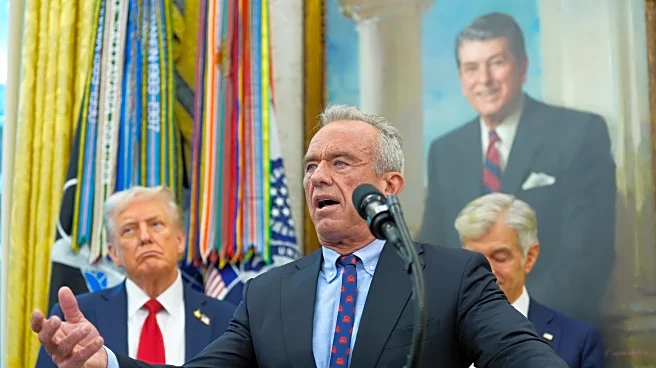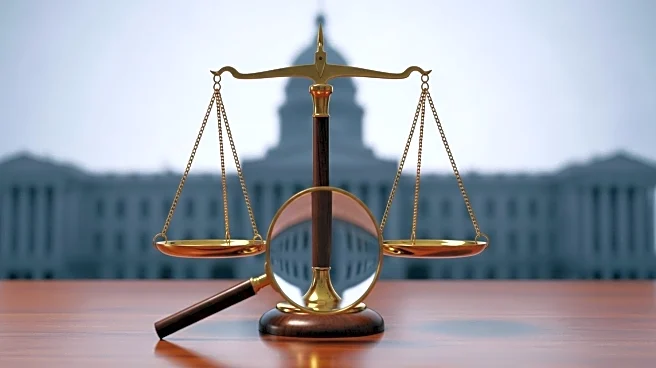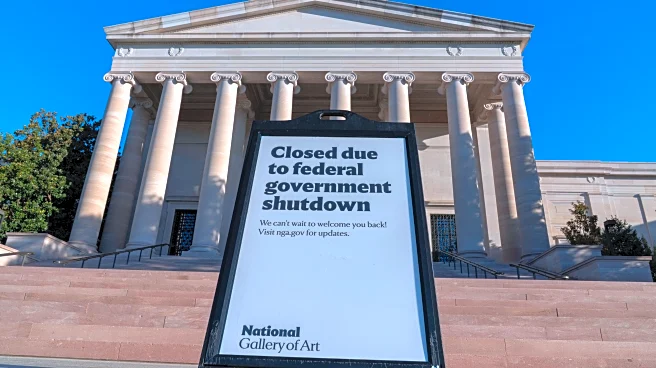What's Happening?
A federal judge has temporarily blocked the Trump administration from executing mass layoffs of federal employees during the ongoing government shutdown. Judge Susan Illston of the U.S. District Court for the Northern District of California issued a temporary
restraining order, halting reduction-in-force (RIF) notices sent to approximately 4,000 federal employees. The court's decision prevents the administration from proceeding with layoffs across multiple agencies, including the Department of Health and Human Services, where 982 employees were initially targeted. The ruling comes amid a broader plan by the administration to lay off up to 10,000 federal workers, a move justified by the Office of Management and Budget as a response to Congress's failure to pass a stopgap spending bill.
Why It's Important?
The court's intervention is significant as it addresses concerns over the legality and authority of the Trump administration's actions during the shutdown. The layoffs, particularly in critical agencies like the CDC, have raised alarms about the potential impact on public health infrastructure and preparedness for future emergencies. The decision underscores the tension between executive actions and legal constraints, highlighting the role of the judiciary in checking administrative overreach. The blocked layoffs could affect the administration's ability to implement its policy agenda, as the shutdown has already slowed down government operations.
What's Next?
The Trump administration is expected to appeal the court's decision, potentially leading to further legal battles. The outcome of these proceedings could set precedents for how government shutdowns impact federal workforce management. Meanwhile, agencies are required to provide a list of all RIF plans, which may influence future court rulings. The administration's broader strategy to downsize the federal government may face additional scrutiny and resistance from unions and affected employees.
Beyond the Headlines
The legal challenge highlights ethical concerns about the treatment of federal employees during shutdowns, as well as the broader implications for government accountability and transparency. The case may prompt discussions on the balance between fiscal policy and workforce stability, especially in essential services. Long-term, this situation could influence public perception of government efficiency and the role of unions in protecting worker rights.















